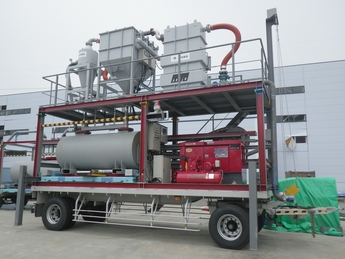TEPCO has begun vacuuming up radioactive dust around the Fukushima Daiichi site, using a backhoe, two special rigs and a vacuum truck.

Tests have found that vacuuming produces a reduction of radioactivity of 30-50%. An operator uses the backhoe arm to position a hose strapped to its end to suck up dust, gravel, soil and other debris. The wheel-mounted rigs include 3.0 m3 tanks for storing waste, and generators to create suction. The larger dust rig includes a cyclone, bag filter and charcoal filter.
Other general site decontamination work includes removing large rubble and spraying land and buildings with a green polymer spray to reduce the mobility of dust.
Media reports suggest that plans are gathering pace for decontamination of affected areas outside the 20km exclusion zone. An order for an emergency evacuation preparation area adjacent to the 20km evacuation area was lifted on 30 September. Schools near the evacuated area are scheduled to reopen in October. Dosimeters have been distributed to schools and preschools. The threshold for cumulative external radiation permitted at schools has been lowered to 1 mSv/year, according to Japan Atomic Industrial Forum's Atoms in Japan news service.
Japanese national newswire NHK reports that Fukushima prefecture began the first of 10 two-day training sessions with volunteers (113 attended the session, in early October). A Japan Atomic Energy Agency expert explained how to remove radiologically-contaminated material from house gutters and roadside ditches. An international conference on decommissioning has been scheduled for 16-17 October.
Related ArticlesFinnish government says yes to TVO and Fennovoima Two more nuclear reactors to be built in Finland Fennovoima names nuclear plant site choices Fennovoima invites bids from Areva and Toshiba GEH and Fluor team up for OL4




